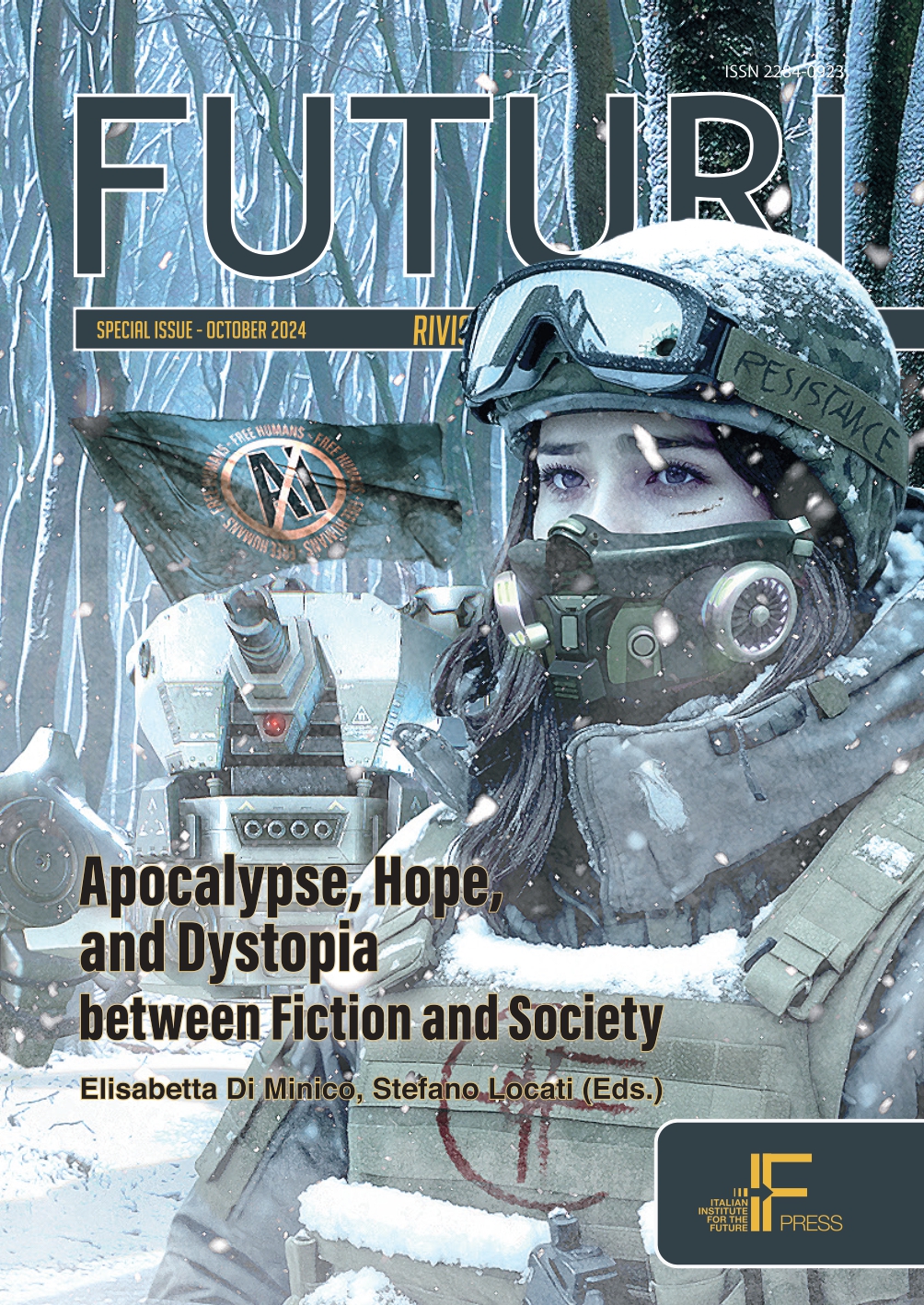Shadows in the Shelter. “Fantastika” Variations on a Decadent Trope, between Literature and Cinema

Pubblicato 14-02-2025

Questo lavoro è fornito con la licenza Creative Commons Attribuzione - Non commerciale - Non opere derivate 4.0 Internazionale.
Abstract
Since J.K. Huysmans’s novel À rebours (Against the Grain) appeared in 1884, the retreat from the outside world became a trope in decadent literature, serving as a blueprint for fictionalized treatments of aestheticism, anti-bourgeoisie, pessimism. This paper aims to explore the cultural and social implications of contaminating such trope with elements of popular genres like fantasy, horror and science fiction, here grouped together under the umbrella term of “fantastika”, a category promoted by writer and literary critic John Clute since 2007 to describe the fantastic (non-realist) as a whole in narrative media. Three novels and three films will be taken into account, using a transmedia approach to highlight the relevance of the “fantastika isolation” formula not only when it actually started in the long 19th century, but also in contemporary cinema, as to encourage further analysis on its fate. The three novels are Huysmans’s 1887 En rade (Stranded), M.P. Shiel’s 1901 The Purple Cloud, Aldo Palazzeschi’s 1908 :riflessi (:reflections). The three films are Giovanni Pastrone’s 1916 Il fuoco (The Fire), Lars von Trier’s 2009 Antichrist and 2011 Melancholia. While none of the above mentioned case studies can be regarded as popular – with the partial exception of The Purple Cloud –, they all include imaginative elements inspired by fantastika (nightmares, visions, haunted houses, the last man on Earth, the end of the World). In doing so, distinguished authors seem to look for more entertaining ways to develop their otherwise static plots centered on one or two isolated characters. Yet, consistently with an elitist conceptualisation, their sociopolitical ideology appears to remain intact: accepting popular clichés does not translate into a more democratic literature or cinema.
